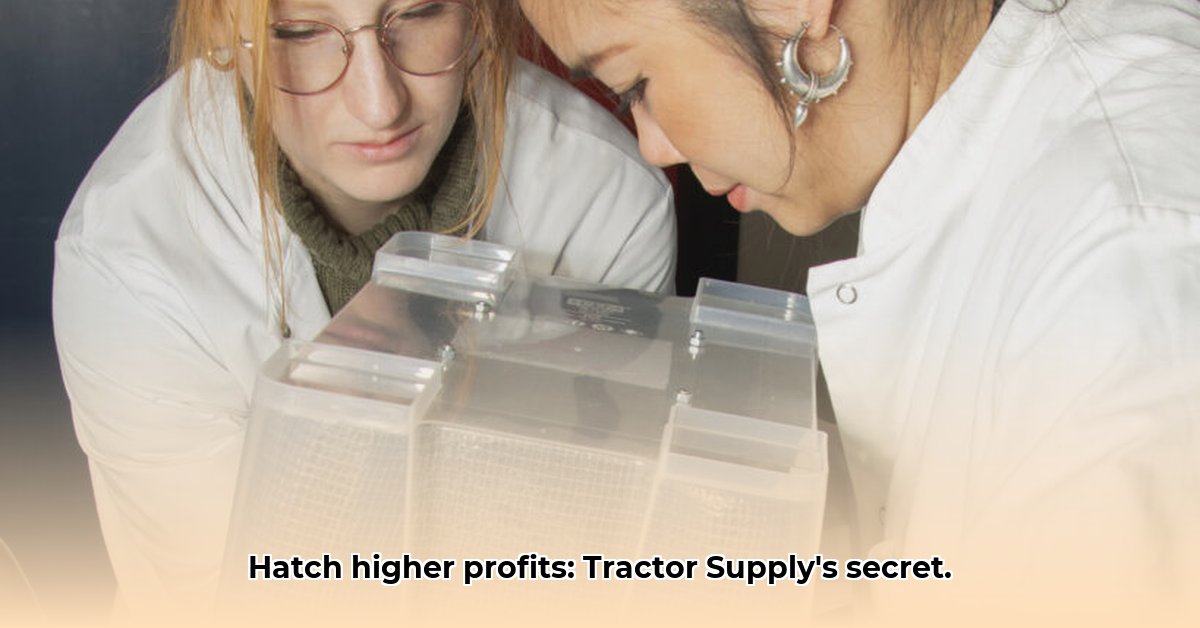
Incubator Technology: A Game-Changer for Sustainable Agriculture
Thinking about boosting your farm's profits and sustainability? Incubator technology, readily available from suppliers like Tractor Supply, offers a significant opportunity to increase hatching success rates and overall yields. For more information on Tractor Supply incubators, check out this helpful resource: Tractor Supply Incubators. This guide will walk you through selecting, setting up, and optimizing incubator use, regardless of your farm's size or experience level. We'll explore ways to maximize efficiency and minimize costs, fostering a more profitable and environmentally conscious farming operation.
Understanding Tractor Supply's Incubator Options and Their Features
Tractor Supply provides a range of incubators catering to diverse farming needs, from small-scale backyard operations to larger commercial ventures. Models vary in size, automation levels, and features. Choosing the right incubator involves carefully considering factors such as hatching capacity (how many eggs you plan to incubate simultaneously), the specific bird species you're raising (different species have different needs), your budget, and the level of automation you require.
"Selecting the correct incubator is critical for success," says Dr. Emily Carter, Avian Science Professor at Purdue University. "Factors like temperature and humidity control are paramount for optimal hatching rates."
Key Features of High-Performance Incubators
Top-tier incubators from Tractor Supply typically include features like automatic egg turning (for even development), precise digital controls for temperature and humidity, alarms to alert you to potential issues (like power outages), and sometimes even automatic candling (to check egg development) and advanced ventilation systems. These features contribute to higher hatching rates and healthier chicks.
Choosing the Right Incubator: A Practical Guide
Selecting the best incubator requires careful consideration. Ask yourself these questions:
- Hatching Capacity: How many eggs do you need to hatch at once? Start small and scale up as needed.
- Bird Type: Different bird species have specific incubation needs. Choose an incubator compatible with your bird type.
- Budget: Consider both the initial purchase price and ongoing operational costs (electricity).
- Automation Level: Do you prefer a fully automated system or a more manual approach?
Thoroughly research different models, compare specifications, and read online reviews. Don't hesitate to discuss your needs with Tractor Supply staff; their expertise can be invaluable.
Maximizing Your Incubator Investment for Profit
Higher hatching rates directly translate to more birds, increased egg production, and ultimately, higher profits. Year-round hatching, unlike seasonal natural brooding, enables continuous income generation. Healthier chicks mean lower mortality rates, reducing losses and maximizing your returns. A 90% hatch rate, as opposed to a 70% rate, represents a substantial increase in profitability, especially at scale. This improvement in efficiency directly impacts your bottom line.
Setting Up Your Incubator: A Step-by-Step Guide
Proper incubator setup is crucial for successful hatching. Follow these steps:
- Unboxing and Placement: Carefully unpack your incubator and place it on a level, stable surface away from direct sunlight and drafts.
- Cleaning and Disinfection: Thoroughly clean and disinfect the incubator interior with an appropriate solution to prevent disease.
- Calibration: Set the temperature and humidity according to the manufacturer's instructions for your bird species; double-check your settings.
- Egg Placement: Arrange the eggs according to the manual's recommendations, ensuring adequate spacing for airflow.
- Monitoring: Regularly monitor temperature and humidity, making necessary adjustments to maintain optimal conditions.
- Candling: Periodically candle eggs (use a candler) to check development and identify any issues.
- Hatching Day Preparation: Prepare a clean, warm space with food and water readily available for newly hatched chicks.
Weighing the Pros and Cons of Incubator Use
While incubator technology presents numerous advantages, it's important to acknowledge potential drawbacks:
| Pros | Cons |
|---|---|
| Significantly higher hatching rates | Requires an upfront investment |
| Year-round production, steady income | Needs regular monitoring and maintenance |
| Healthier, stronger chicks | Potential for equipment malfunctions |
| Precise control over environment | Uses electricity; adds to your energy bill |
| Time savings with automated models | Requires a dedicated space |
Reducing Electricity Costs with Sustainable Incubator Practices
Sustainable incubators can significantly reduce energy consumption. Here’s how to minimize your energy footprint and costs:
- Choose energy-efficient incubators: Prioritize models with excellent insulation, efficient heating elements, programmable thermostats, and energy-efficient ventilation.
- Harness renewable energy: Explore solar power integration for a clean, cost-effective energy source. Consider a hybrid system with battery backup.
- Access financial incentives: Research government grants and tax incentives for sustainable agricultural practices.
- Optimize incubator placement: Position your incubator strategically to maximize sunlight exposure (for solar models) and minimize exposure to extreme weather conditions.
- Monitoring and Maintenance: Regularly monitor energy consumption and perform routine maintenance to prevent breakdowns and extend equipment lifespan.
The Bottom Line: Incubators and Your Farm's Future
Incubator technology represents a powerful tool for enhancing farm profitability and sustainability. However, success involves meticulous planning, diligent monitoring, and consistent maintenance. By investing wisely and adopting sustainable practices, you can maximize your returns while contributing to a more environmentally responsible farming operation.